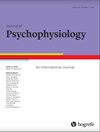Meta-Analysis and Systematic Review of Resting-State High-Frequency Heart Rate Variability in Binge-Eating Disorder
IF 0.9
4区 心理学
Q4 NEUROSCIENCES
引用次数: 1
Abstract
Abstract. Binge-eating disorder (BED) is associated with a greater risk for cardiac problems and co-occurring health conditions. Resting-state measures of high-frequency heart rate variability (HF-HRV), which is a physiological proxy of self-regulatory neural functioning, may aid understanding of health risks. We systematically reviewed and meta-analyzed the literature on HF-HRV in individuals with BED and without BED. Six studies were reviewed in the qualitative synthesis, and five studies assessing HRV in individuals with BED ( n = 153) and without BED ( n = 124) were included in the meta-analysis. A non-significant effect size (Hedges’ g = .08, SE = 0.36, 95% CI [−0.62, 0.78]; z = 0.23, p = .82) was found, suggesting no difference in HF-HRV between groups. Age, BMI, and BMI-matched control status were not significant covariates. Synthesizing the five studies with available data, we found no difference in resting-state HF-HRV between individuals with and without BED. There was high heterogeneity in the sample, suggesting potential moderators. We discuss potential mechanisms, methodological and demographic confounds, and future directions for study.暴饮暴食症静息状态高频心率变异性的meta分析和系统综述
摘要暴饮性饮食障碍(BED)与心脏问题和并发健康状况的风险更大有关。高频心率变异性(HF-HRV)的静息状态测量是自我调节神经功能的生理指标,可能有助于了解健康风险。我们系统地回顾并荟萃分析了关于患有BED和未患有BED的个体的HF-HRV的文献。在定性综合中回顾了6项研究,荟萃分析中包括5项评估患有BED(n=153)和未患有BED的个体(n=124)的HRV的研究。发现非显著效应大小(Hedges’g=0.08,SE=0.36,95%CI[-0.62,0.78];z=0.23,p=.82),表明HF-HRV在各组之间没有差异。年龄、BMI和BMI匹配的对照状态不是显著的协变量。综合这五项研究和现有数据,我们发现患有和不患有BED的个体在静息状态HF-HRV方面没有差异。样本中存在高度异质性,表明存在潜在的调节因素。我们讨论了潜在的机制、方法学和人口统计学的混杂因素以及未来的研究方向。
本文章由计算机程序翻译,如有差异,请以英文原文为准。
求助全文
约1分钟内获得全文
求助全文
来源期刊

Journal of Psychophysiology
医学-神经科学
CiteScore
2.60
自引率
7.70%
发文量
25
审稿时长
>12 weeks
期刊介绍:
The Journal of Psychophysiology is an international periodical that presents original research in all fields employing psychophysiological measures on human subjects. Contributions are published from psychology, physiology, clinical psychology, psychiatry, neurosciences, and pharmacology. Communications on new psychophysiological methods are presented as well. Space is also allocated for letters to the editor and book reviews. Occasional special issues are devoted to important current issues in psychophysiology.
 求助内容:
求助内容: 应助结果提醒方式:
应助结果提醒方式:


